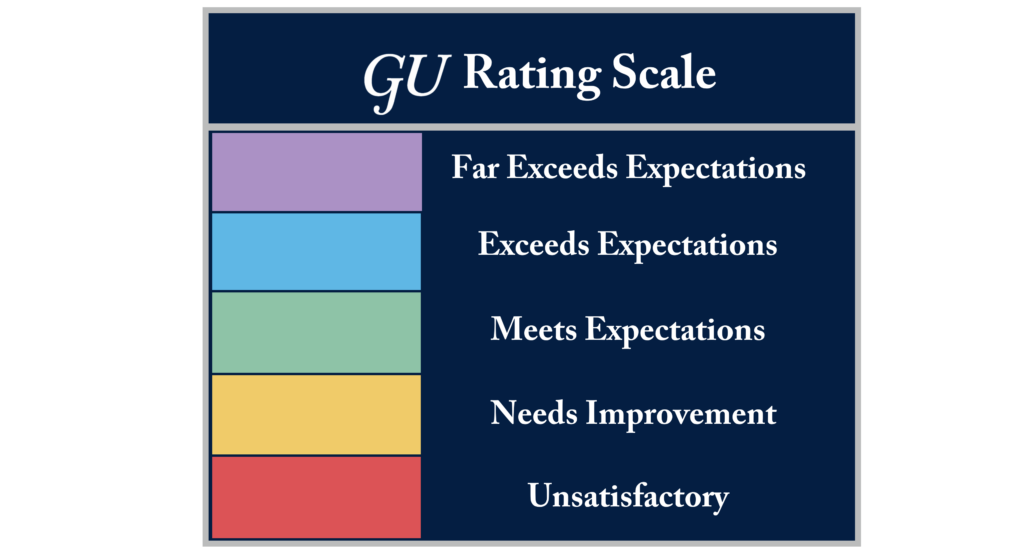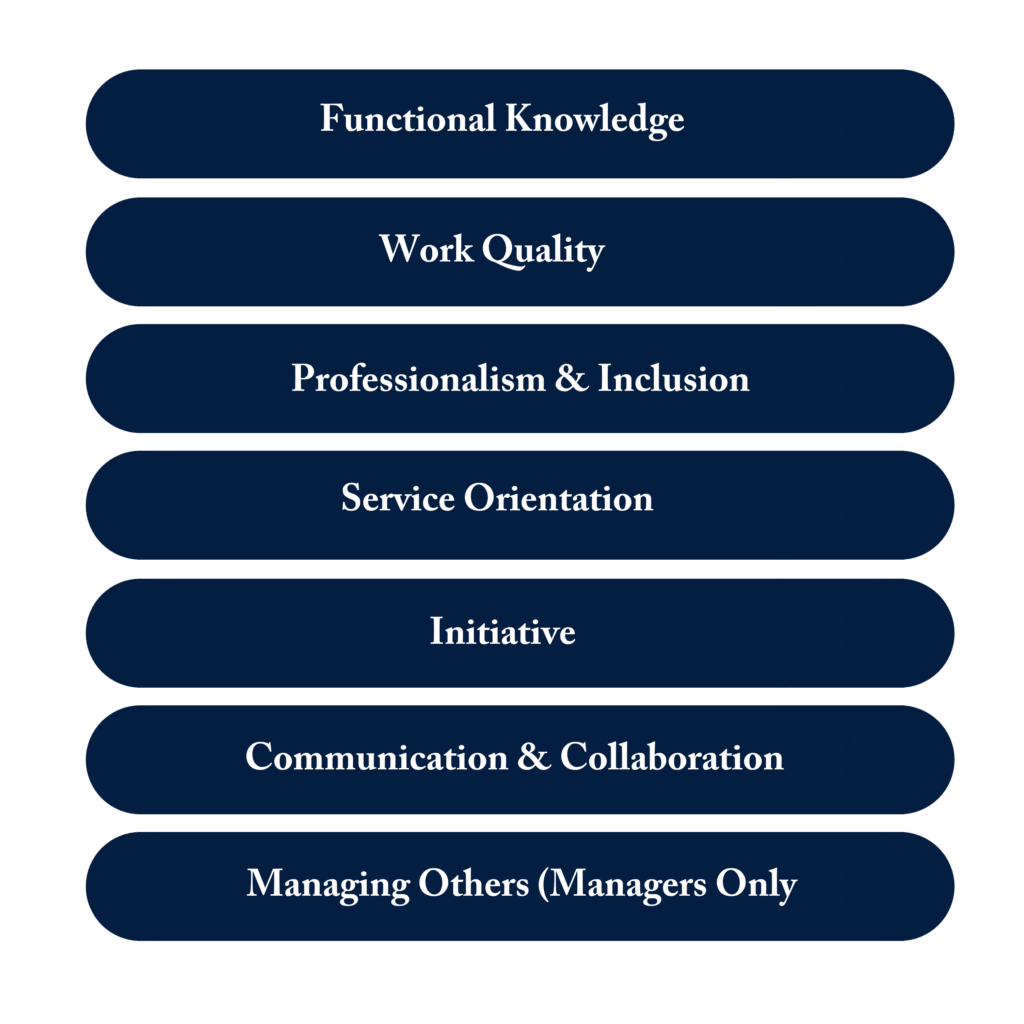Performance Management
Performance Management at Georgetown
Performance Management is the continuous process of communicating with, measuring, and developing employees to be fulfilled and successful contributors to the Georgetown community and our mission. This continuous process involves a commitment from both Managers and Supervisees to actively engage in the process together, with the mutual goal of supporting employee growth and development. Integral aspects of the performance management process include an initial probationary period, regular check-ins and goal setting, and an annual performance review.
The Department of Human Resources is committed to designing Performance Management processes that foster a collaborative and supportive environment in which managers and employees are empowered to communicate about goals, growth areas, and accomplishments in service of creating a culture of intentionality, accountability, and excellence.
Performance Engagement Lifecycle

Best Practices for Performance Engagement
Probationary Period | Quarterly Check Ins | Annual Evaluation | |
|---|---|---|---|
When | First 3 or 6 months of employment: Probationary Policy | At least four times a year (every 90 days) | February – April for most GU employees. See the Annual Performance Review for details. |
| Manager Responsibilities | Set Expectations • Review Position Description and Probationary Policy with Employee • Train Employee on core job duties and offer additional training as needed • Describe/Document/Demonstrate your expectations • Set goals for employee • Complete Probationary Evaluation in GMS before probationary period ends | Provide Feedback & Revise Expectations • Review Goals and Employee progress • Communicate what is going well & where improvement is needed • Set new expectations • Collaborate to set new goals | Complete Annual Evaluation Process • Review employee successes, challenges, goals from the eligible year and their annual self-evaluation. • Complete Manager Evaluation and release to the employee at minimum two business days (ideally one week) prior to meeting. • Meet with employee to review evaluation and set expectations for new year |
| Employee Responsibilities | Learn Job Expectations • Review Your Position Description (PD) with Manager • Ask Questions & request help as needed • Enter goals in GMS | Ask for Feedback & Adjust Goals • Describe your progress towards Goals • Ask for specific feedback from your manager on your performance • Collaborate to set new goals and enter into GMS | Complete Annual Self-Evaluation • Reflect on accomplishments and challenges of previous year • Fill out annual self-evaluation in GMS • Discuss with manager • Set new goals |
Quarterly Check-ins
Managers and Employees are encouraged to co-manage performance accountability together and continuously exchange mutual feedback in order to grow together as individual contributors and leaders. Managers should schedule regular meetings with their direct reports (bi-weekly, or another cadence determined together) and also quarterly check-ins (every 90 days) to address progress or areas for growth in each core competency.
Annual Performance Review
The Annual Performance Review process is an opportunity for managers and employees to discuss departmental and individual goals, recognize challenges accomplishments from the prior year, and plan for professional development in the year ahead. This is also a time to reflect on existing individual and/or team norms, and develop strategies for enhancing team cohesion and communication.
Tools for Managing and Evaluating Performance
Managing and evaluating performance at Georgetown involves several key components (Competencies, Ratings, Goals, and Professional Development) that should be used as tools to structure and guide meaningful conversations and performance feedback. These components are entered in the GMS system during the Annual Performance Review. It is essential that both managers and non-managers understand the following components starting during the Probationary Period.
Training and Development is available during the spring semester to guide employees and managers through the available tools, best practices, and evaluation process. If you have any additional questions you should contact your assigned HR Business Partner for support.
Competencies
Employees will rate themselves via a self-evaluation and managers will rate their direct reports on the following competencies:
For full definitions of the competencies, see
Terms and Tools PDF.
Ratings
Employees and managers will assign a performance rating to each competency area and an overall rating for the performance evaluation. The overall rating should take into account the individual competency ratings, challenges and accomplishments of the previous year, and progress towards assigned goals. The Overall rating should reflect a holistic view of the employee’s past year and does not need to be an average. Ratings include:

For full definitions of the ratings, see
Terms and Tools PDF.
Goals
Effective performance management starts with setting clear and meaningful Goals. Goals should be initiated by employees but developed as a collaborative effort between employees and managers. SMART goals create clarity, structure, and accountability around work priorities and serve as a vehicle for ongoing communication. Goals are optional and can be initiated in GMS at any time of the year and automatically route to the Manager for approval. Employees may choose to add performance goals from the previous year to their performance review to demonstrate the progress they have made.
Professional Development
Achieving or supporting performance goals and professional aspirations involves an investment in Professional Development (PD) opportunities. Managers are encouraged to promote opportunities for growth and development such as training and workshops, professional certifications, free linked-in learning courses, shadowing colleagues, serving on a committee/new project, joining an Employee Resource group, and more. Employees are encouraged to reflect on their areas of interest and growth and identify the PD they wish to pursue. In the Self-Evaluation in GMS, employees have the option to include their desired or intended PD for the next performance year. This is not a retroactive reflection of the past year, but a future-oriented one.
Learn more about the Annual Performance Review process, terms, and available tools.

